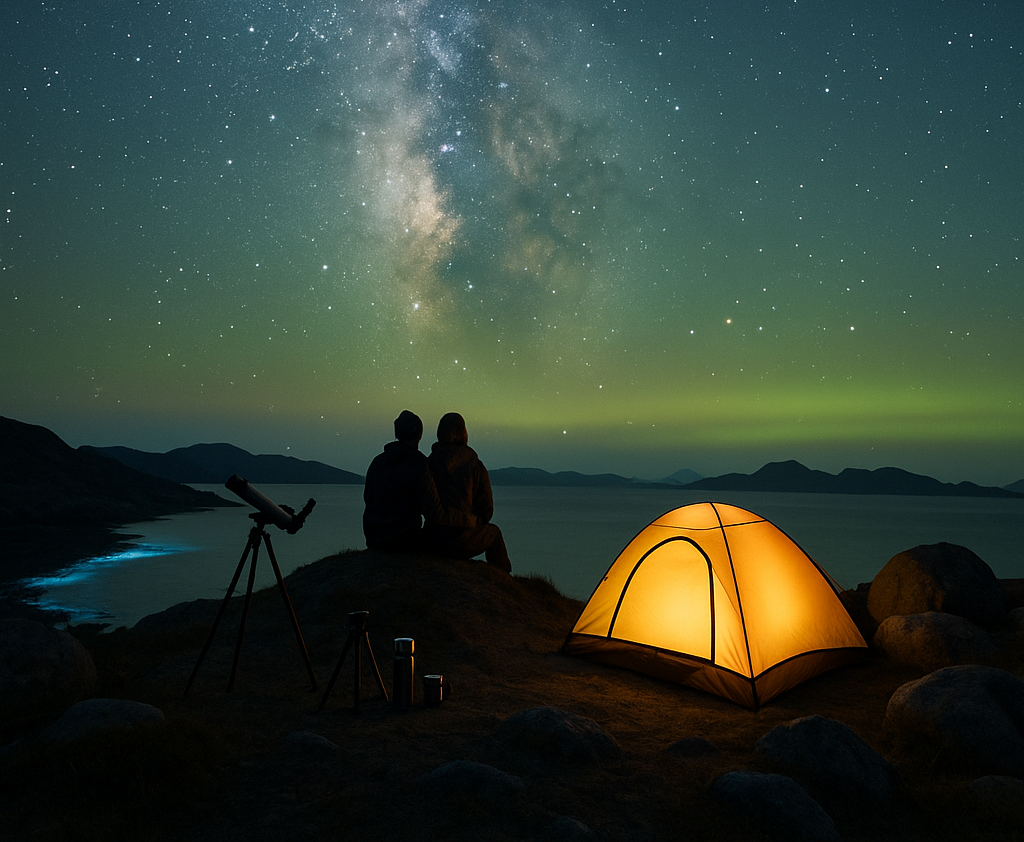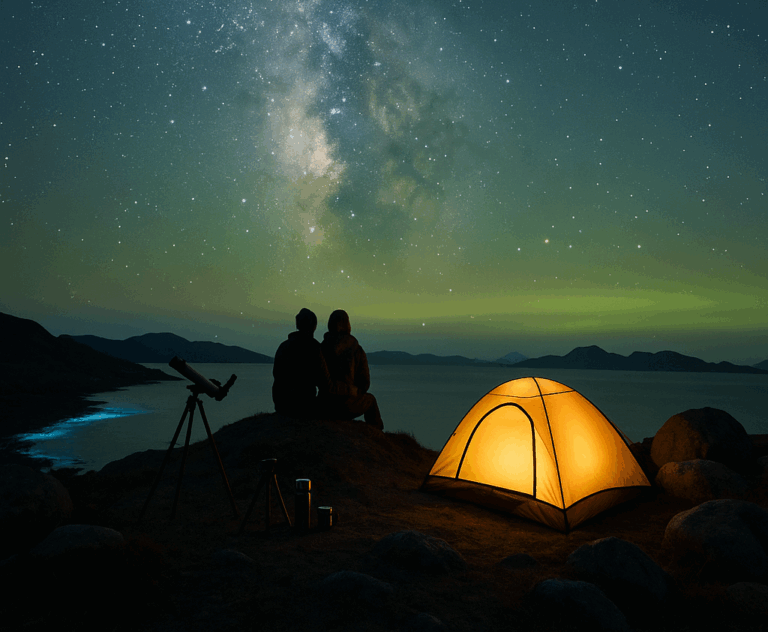
Exploring the World After Dark in 2025
As the sun sets, a new kind of traveler awakens—one who seeks the magic, mystery, and majesty of the world after dark. Welcome to the era of Noctourism—a rising global travel trend where night itself becomes the destination, not just a backdrop.
From stargazing in remote deserts to watching bioluminescent waves crash on moonlit shores, phenomena-driven getaways are captivating curious minds, nature lovers, and soul-searchers alike. In 2025, more travelers than ever are chasing celestial, seasonal, and natural night-time wonders in search of awe-inspiring moments and a deeper connection to the universe.
Let’s dive into this glowing movement, the experiences it offers, and why night travel is the next frontier in tourism.
🌙 What is Noctourism?
Noctourism is a form of tourism centered around night-time activities, often in natural settings. It’s not just about nightlife or neon-lit cities—it’s about immersing yourself in unique experiences that only happen when the sun goes down.
This includes:
- Stargazing tours and meteor shower camps
- Northern Lights (Aurora Borealis) expeditions
- Desert moon safaris
- Firefly and bioluminescence chasing
- Night hikes and full moon treks
- Cultural night festivals and night markets
- Lunar photography and astrophotography workshops
Noctourism is also closely tied to phenomena-driven getaways—trips planned around rare or cyclical natural events.
✨ Why It’s Trending in 2025
🌌 1. Astrotourism Boom
With light pollution-free zones shrinking, travelers are prioritizing trips to certified Dark Sky Reserves in places like Chile’s Atacama Desert, New Zealand, and Ladakh in India to witness star-filled skies.
🔥 2. Desire for Unique, Soulful Experiences
Post-pandemic travelers want more than sightseeing. They’re seeking emotional, awe-inspiring, and quiet moments, and noctourism delivers exactly that—often in uncrowded, peaceful settings.
🎆 3. Natural Events Calendar Planning
People are planning entire vacations around phenomena like:
- Auroras in Scandinavia, Canada, or Alaska
- Bioluminescence in Puerto Rico, Andaman Islands, or Maldives
- Firefly season in Japan or Thailand
- Perseid & Geminid meteor showers
- Lunar eclipses and supermoons
🌎 4. Climate & Comfort
In hotter destinations, nights are cooler and more comfortable for trekking, wildlife spotting, and exploring. Night safaris are gaining popularity in places like Rajasthan, Botswana, and Arizona.
🏕️ Top Noctourism Experiences Around the World
| Experience | Destination | Highlights |
|---|---|---|
| Aurora Hunting | Iceland, Finland, Alaska | Best from Oct to March; surreal green and purple skies |
| Meteor Shower Camps | Jordan, Chile, Ladakh | Peak in August (Perseids) and December (Geminids) |
| Bioluminescent Bays | Puerto Rico, Maldives, Andaman | Glowing waves and plankton you can kayak through |
| Firefly Watching | Japan (Kamakura), Thailand, Malaysia | Silent forests lit by synchronized blinking lights |
| Moonlit Desert Safaris | Morocco, Rajasthan, Namibia | Camel rides, bonfires, traditional music under moonlight |
| Night Sky Photography Tours | New Zealand, Utah, South Africa | Learn astrophotography with experts in low-light zones |
| Dark Sky Parks | USA, Canada, Slovenia | Certified low-light areas with telescope stations |
| Night Hikes & Full Moon Treks | Machu Picchu, Mount Batur (Bali) | Summit with the stars as your guide |
📸 The Rise of Night-Time Content Creators
The surge in astro-influencers and night photographers has made noctourism even more viral. Instagram, YouTube, and TikTok are full of:
- Star trail time-lapses
- Dancing aurora reels
- Lunar eclipse shots
- Glowing ocean paddles
Travelers are investing in low-light camera gear, AI editing apps, and portable telescopes just to capture the perfect nightscape.
🌱 Sustainable Noctourism: A Key Consideration
While noctourism is magical, it must be responsible:
- Respect nocturnal wildlife: Avoid disturbing animals with flashlights or noise.
- Limit light pollution: Use red-light torches and camp in certified dark zones.
- Leave no trace: Especially when visiting untouched forests, beaches, or mountains at night.
- Support local guides: Hire ethical, trained local night guides for safety and insight.
🧳 Travel Tips for Night Adventures
- Layered Clothing: Nights can be drastically colder—even in deserts.
- Flashlight or Headlamp: Red light modes preserve night vision.
- Bug Protection: Especially near wetlands or tropical forests.
- Tripod & Manual Camera Mode: For capturing clear night skies.
- Backup Power Banks: Phones and gadgets drain faster in colder night air.
- Travel Insurance: Ensure it covers nighttime excursions and remote areas.
🔮 What’s Next in Noctourism?
- Night sky observatory hotels: Rooms with glass domes and telescopes
- Augmented reality stargazing apps: Real-time constellation mapping with educational overlays
- Moon-themed festivals: Combining mythology, wellness, and night hikes
- Glamping under meteor showers: Luxury tents with panoramic star views
🌌 Final Thoughts
Noctourism isn’t just about staying up late—it’s about awakening to the beauty of the unseen. When the crowds disperse, and the world quiets down, the night reveals some of its most breathtaking secrets. In 2025, more travelers are choosing to escape the ordinary by embracing the extraordinary world after dark.
So next time you plan a trip, don’t just ask:
“Where do I want to go?”
Also ask:
“What do I want to see—when the world is asleep?”
Because sometimes, the most unforgettable adventures happen under the stars.



